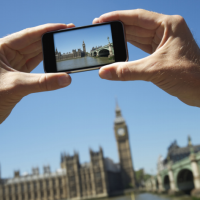
It’s taken bloody long enough and has come at the expense of dads being told that they can’t take photos of their kids in shopping centres, but finally there is some guidance for jumped-up heavies in uniforms who pass for security guards on what they can and cannot say and do to photographers. It’s the result of some pretty lengthy discussions that involved the Home Office, the British Security Industry Authority (BSIA), and photographers’ representatives such as Amateur Photographer and SceneThat. But by Juno, I’ve read it and it’s clear and reinforces some important points that we’ve been trying to teach them for a while now.
As far as I’m concerned, these are the edited highlights. You can go peruse the rest of the document – and it’s only four pages long – on the BSIA website.
- The size and type of cameras are not, in themselves, indications of suspicious behaviour. Large cameras, lenses and tripods should therefore not be viewed as being more suspicious than other types of equipment.
- If an individual is in a public place photographing or filming a private building, security guards have no right to prevent the individual from taking photographs.
- Security guards cannot delete images or seize cameras, nor can they obstruct individuals from taking photographs.
- Members of the public and the media do not need a permit to film or photograph in public places. This includes where an individual is in a public place but taking a photograph or film of a private building.
There is more, but this alone should help photographers reinforce that they’re not terrorists and by taking a photo, they’re not breaking the law or doing anything that’s otherwise nefarious. I think I’ll print out a copy and keep it in my camera bag.





